Terrifying video shows moments before deadly stampede at Israeli holy site
As the initial shock and horror over Thursday night’s deadly crush at Lag B’Omer festivities on Mount Meron began to subside, focus started to turn on Friday toward the matter of who was to blame for the packed conditions at the site that led to the deaths of 45 people and the injuring of dozens of others in the fatal stampede.
Stark questions will likely be directed at political, civil and law enforcement officials involved in planning, approving and securing the event, amid talk of a potential state commission of inquiry to thoroughly investigate the disaster.
On Friday night, multiple reports in Hebrew media outlets indicated that there had been immense pressure by religious lawmakers ahead of the festivities to ensure that there would be no limits placed on the number of attendees. Some 100,000 ultra-Orthodox pilgrims ultimately attended the event; a framework drawn up by the Health Ministry, in consultation with other government officials, police and others, would have limited the event to 9,000 participants, but was not implemented.
Officials with knowledge of the investigation told Channel 13 that cabinet ministers had pressed police to allow large numbers of people to enter the gravesite of Rabbi Shimon bar Yochai, saying this was to compensate for last year’s event being canceled due to coronavirus.
The disaster, which began at 1 a.m. on Friday morning, took place when huge crowds of ultra-Orthodox pilgrims were making their way along a narrow walkway with a slippery metal flooring that ended in flights of stairs. People began to slip and fall, others fell upon them, and a calamitous stampede ensued. The fitness of the walkway, whether it was approved for use and by whom, are matters that seem certain to be a focus of the various investigations.
A Channel 11 news report said the police were pointing a finger of blame at the Ministry of Religious Affairs’ safety engineer, who approved security arrangements for the festivities and who, the report said, earlier in the week checked the walkway where the fatal stampede occurred.
According to Channel 12, the head of the ultra-Orthodox Shas party Aryeh Deri sent an official request to Public Security Minister Amir Ohana ahead of the event, saying that “anyone who wants to come [to Meron] should be allowed to do so.”
Ohana, who is responsible for police, went on to approve the request and no limits on attendees were put in place at Meron, despite pleas from health officials concerned about coronavirus transmission.
According to Kan news, unnamed sources in Israel Police’s Northern District have blamed Religious Affairs Ministry officials, particularly its engineer and security chief, who gave the okay for the celebration to be held and reportedly personally inspected the walkway where the stampede occurred.
Former police officials spoke to Kan of “political pressure on police to hold the event at any cost.”
The unnamed officials added: “There is no other event in Israel that police approve without an overall producer” who takes responsibility for attendants’ security. “It’s the biggest mass gathering in Israel. In no other event does the political pressure on police come close to the amount of pressure [brought forth] to hold the Meron event.”
They specifically cited “Haredi politicians and their political allies.”
According to Channel 12, roughly two weeks before the tragedy, Religious Affairs Minister Yaakov Avitan (Shas) toured the site to monitor preparation for the Lag B’Omer mass gathering.
“I was impressed by the comprehensive and professional preparation that is being made for the celebration, both by the Center for Holy Places, by the police and by other parties,” Avitan said then in a statement. “I thank Interior Minister Aryeh Deri for the efforts he has made in the face of various [complications] to enable the ascendance of many to Meron this year without any restrictions, and I hope that with God’s help everything will go well.”
In the wake of the disaster, numerous officials have spoken out about years-long failures and oversights, alongside repeated, unheeded warnings that conditions at the site during Lag B’Omer were a disaster waiting to happen. Some have even said it was a wonder tragedy had not struck sooner.
So far, one police official has taken responsibility: Northern District Commander Shimon Lavi, who oversaw the security arrangements for the celebrations, said Friday morning that he was accountable for the disaster.
“I bear overall responsibility, for better or worse, and am ready for any investigation,” he told reporters. Lavi is not planning to resign, however, according to reports Friday evening.

Neither the police commissioner, the public security minister, Religious Affairs Ministry officials nor Haredi leaders have taken responsibility so far.
Two investigations into the failings that led to the deaths are set to move into high gear after Sunday’s day of national mourning for the victims — by the Justice Ministry’s Police Internal Investigations Department, into police failings, and by the police into the failures of other authorities regarding the event.
However, neither of these two probes has the authority to investigate relevant ministers, including the ministers of public security, interior and religious affairs, and the prime minister himself, all of whom were involved in various meetings relating to preparations for the event.
Former police commissioner Moshe Karadi on Friday night issued a call for a state commission of inquiry, saying responsibility for the tragedy plainly extends beyond the police. Defense and Justice Minister Benny Gantz has also reportedly told aides that some kind of public commission of inquiry is required.
Karadi said political pressures have for years been placed on senior police echelons to tolerate gatherings at Meron larger than they would otherwise approve.
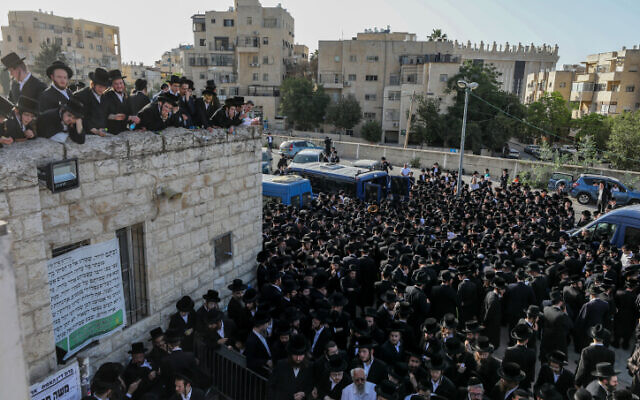
Ahead of this year’s festivities, Netanyahu, Interior Minister Aryeh Deri, Public Security Minister Ohana and Transportation Minister Miri Regev all publicly indicated support for a return to mass gatherings at the event, after last year’s COVID-necessitated cancellation.
An initial police investigation has already shown failings “by all of the parties” that are supposed to have responsibility for the annual event, a Channel 12 news report said.
MK Ayman Odeh, of the Joint List, on Friday called for the resignation of Public Security Minister Ohana for failing to heed “the numerous danger signs” ahead of the event. Ohana earlier Friday himself called for an independent investigation into “all aspects related to the planning of the event, preparations, responsibilities, infrastructure.”
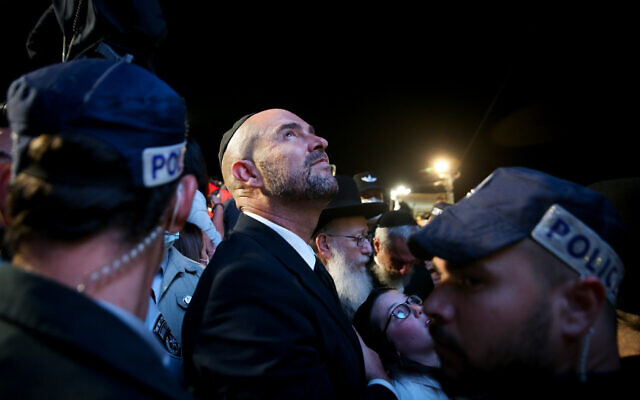
Netanyahu vowed during a visit to the scene of Israel’s worst-ever peacetime disaster that the investigations would be “comprehensive, serious and detailed.”
Both Police Commissioner Kobi Shabtai and Northern Command chief Lavi are set to be called to give testimony to the PIID probe.
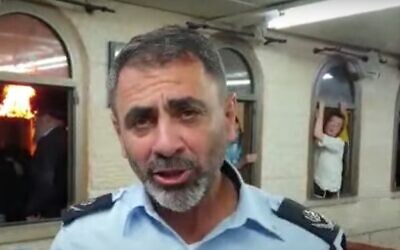
Sigal Bar Tzvi, head of Community Policing for Israel Police, told Channel 13 that the Meron site can hold the estimated 100,000 worshipers who gathered Thursday night, but that the disaster stemmed from too many people being crowded into the specific area, in the particular circumstances, where the stampede unfolded. She added, however, that there were numerous other potential trouble spots on the mountain.
She said repeatedly that the police do not have the authority to limit the number of participants in the gathering on the mountain. “We do what we are told to do, within the framework of our abilities; there is freedom of religious assembly.”
Even though it was “a religious event” that did not require a license or certain other checks, she said, District Commander Lavi had ensured that two safety engineers — the one from the Ministry of Religious Affairs and a second, independent, expert — signed off on the arrangements and that other approvals were obtained.
She said police had warned in the past two weeks “that the event is dangerous,” citing the district commander — an apparent reference to Lavi — who “spoke with who he needed to speak with.” She then said the plans for the event, “including all the dangers… were presented to the minister.” Asked how minister Ohana reacted, she said, “I don’t know. I wasn’t there.”
In the hours since the tragedy, increasing evidence has emerged that warnings about the dangers involved in the annual gathering have been ignored for years, including in two reports by the State Comptroller.
A 2008 State Comptroller report warned of “systemic failure at the Rashbi [Rabbi Shimon bar Yochai] compound” at Meron, due to “many different authorities all involved in its management,” noting that the chaotic situation would lead to harm to the holy site as well as endanger worshipers.
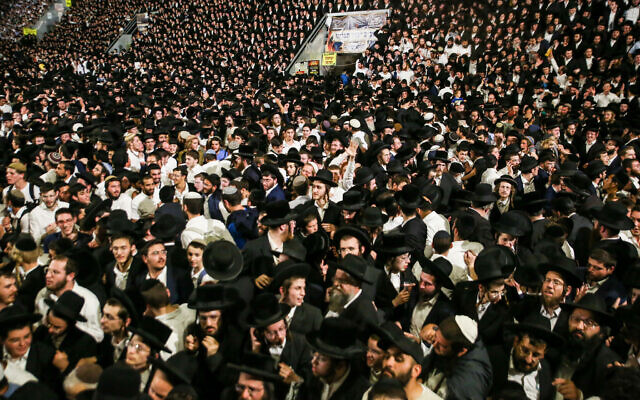
In an additional comptroller report from 2011, it was once again emphasized that the site was underprepared for receiving hundreds of thousands of people. “The existing situation should not be allowed to continue — including the neglected structure where [certain] groups do as they wish, to the abandonment of a site of great importance, both nationally and religiously,” the state comptroller said.
A 2016 police report also warned of trouble ahead. Commander Ilan Mor, head of the operational branch of the national traffic police, produced a report titled, “Meron celebrations: Erasing the writing on the wall.”
The document analyzed past tragedies caused by overcrowding at public events, including disasters and near-disasters at Meron itself, and concluded that the infrastructure at the holy site could not safely accommodate the numbers of worshipers that attended each year at Lag B’Omer.
In the report, Mor called to limit the number of people attending and to appoint a single organizer to manage the site, instead of allowing each Hasidic sect to run its own area.
With this year’s event taking place in the shadow of COVID-19 — having been canceled last year because of the pandemic — consultations involving the Health Ministry, police and other officials concluded that no more than 9,000 people should be allowed to attend. Agreement to this effect was never brought to the government for approval, however, because of infighting among ministers on other matters, including a major dispute over the appointment of a justice minister.
Moreover, according to news reports Friday, police representatives at these meetings made clear that they did not have the resources to ensure that all participants presented “Green Pass” proof of vaccination.
“We worked for weeks on a framework,” Dr. Sharon Alroy-Prais, the head of public health at the Health Ministry, had fumed in a TV interview on Wednesday, a day before the Lag B’Omer festival. “It was approved by all the parties, by the police, by the Religious Affairs Ministry, by the Interior Ministry — everyone. But in the end it fell through because no one would take responsibility for enforcement,” she said, accusing the government authorities of passing the buck.
“It’s shameful,” she said. “The Ministry of Religious Affairs tries to get the police to take responsibility, and they hand it back to the Ministry of Religious Affairs.”

Channel 12 reported Friday that until the last minute, health officials sought to impose a limit to the number of visitors. However, a number of right-wing lawmakers pushed back against the idea, insisting that the majority-Haredi crowd be allowed to celebrate at Meron as they had in years past.
Ultimately, some 100,000 people attended the festivities — more than 10 times the number that had been envisaged, but still far fewer than in many previous years, when hundreds of thousands have participated.
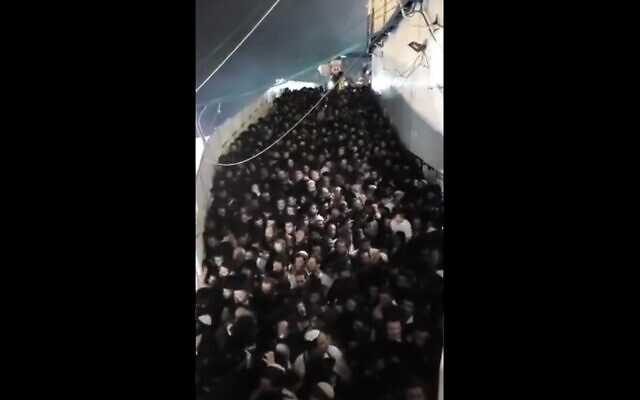
Reports Friday indicated that the Meron mountainside has essentially become a kind of extra-territorial zone, over which the government has for years failed to fully impose its authority. Government ministries, the police, the local authority and the authority that controls Israel’s holy sites are all supposed to have certain responsibilities for the site and the annual event, but in practice overall responsibility has never been finalized.
Separate ultra-Orthodox groups hold their own Lag B’Omer events at the site, and construct their own internal access routes within the facility, Hebrew media reports said.
THANKS SO MUCH,, IT MEANS THE WORLD TO US IN THESE DIFFICULT TIME


No comments:
Post a Comment